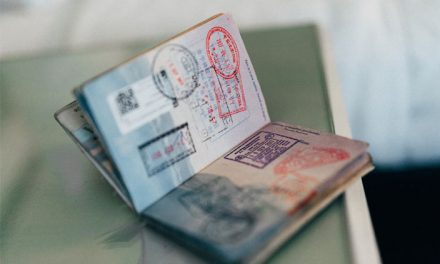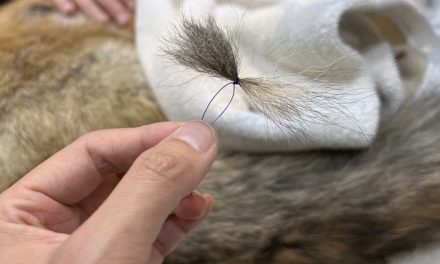It is a truth universally acknowledged that Chinese alcohol sucks. The internet is awash in pieces written by Westerners decrying the nostril-searing industrial stench and funky, gag-inducing sorghum flavor of China’s favorite spirit. Ask the average person overseas about Shaoxing rice wine. If they’ve even heard of it, they’ll probably tell you it’s used in cooking.
And yet, baijiu accounts for a third of the alcohol produced worldwide, and huangjiu is far and away the most widely drunk alcohol in Zhejiang and Shanghai. Those same articles reference laowai who overcame their Buddies-induced trauma and learned to love Chinese liquor. The first baijiu cocktail bar in Beijing was opened by foreigners, and you’ll find a Chinese cocktail or two on menus from Atelier to Jin Hua. It’s almost like there might be something there.
Derek Sandhaus, author of Baijiu: The Essential Guide to Chinese Spirits and reportedly the only Westerner to admit in print that he likes the taste of Chinese alcohol, says that it takes about 300 shots of the infamously foul smelling spirit to learn to love it.
That might be a bit much to ask of your gentle disposition. So instead, here are three bars around town making the case for drinking Chinese alcohol.
*
1945 Chinese Tavern

Wang Jianjun (JayJay), the man behind the bar at 1945 Chinese Tavern, really wants you to try huangjiu. The original Chinese booze, it’s a staggeringly broad category. Before baijiu became China’s drink of choice in the last couple hundred years, huangjiu had a history stretching back thousands of years (naturally), to the point where before distillation was introduced, it was just called “jiu.” Taking a page from the beer and wine industry’s eternal crusade to “educate the Chinese consumer,” Chinese Tavern started offering huangjiu flights.
Their showpiece is the Shaoxing Huangjiu Journey, a mini-tour of four major categories from the most famous city in the industry. There’s the light sherry-like yuanhong; jiafan, literally “added rice,” the most popular and probably the one you’ve tried; xiangyang, created with yuanhong instead of clear water for an extra level of complexity; and xiangxue, which is fortified with baijiu, producing a heady, thick and very sweet wine.

If you didn’t know there were four types of Shaoxing wine (there are more), you’re not alone. JayJay was in a similar situation not so long ago. “I only started learning [about Chinese wine] about a year ago,” he says. “I started with Shaoxing wine because it was the only one I knew.”

Not interested in sampling different brown liquids? Also not alone. “At the start, our cocktail page was at the end of the menu, but we very quickly learned to put it at the front,” says JayJay. “We’re using Chinese cocktails as a key to introduce huangjiu to more people.”
Of course, if the wine itself is very balanced, it’s very hard to add another flavor to it. “You don’t really make it better, you’re just making it worse,” he adds. “Why do it at all?” But it turns out that jiafan lends itself well to floral drinks, while xiangyang works better in a sour or paired with orgeat and lemon-lime, and xiangxue can be fatwashed with brown butter.

That’s only Shaoxing wine. There’s a huge variety of huangjiu in China, from the slightly burnt flavors of Shandong wines, which use the same water source as Tsingtao beer, to the milky and floral variety from Xi’an, at only 0.5% ABV. JayJay still hasn’t had time to incorporate most of them into the menu yet.

So what about baijiu, though?
“Baijiu is hard to control,” JayJay says with furrowed brows. “I still think the best partner with baijiu is fruit. When I make a baijiu cocktail, I don’t want to cover it, I want to show its character. Otherwise, you might as well just use something else.”
Making it a little easier for JayJay is Cityson, a two-year old brand made in Sichuan, pitching themselves as the baijiu for bartenders: a sweet and less funky light-aroma type bottled at 40% ABV, it’s much more approachable than, say, its Sichaun neighbor Wuliangye. JayJay’s thankful for that. “Selling only Chinese alcohol, I’ll say, it’s hard. I wish there was a huangjiu brand that would help us out like Cityson,” he adds with a laugh.

Kunplug – Yuanhong, Homemade Red Date Spirits, Bitters
*
Peking Inn

Chris Xi is less concerned with converting people to Chinese liquor than with making a good bar. If it hadn’t been for the bosses at Peking Inn, he probably wouldn’t have tried, but now that he’s gotten into his tinkering, he’s enjoying the challenge.

Unlike Chinese Tavern, Peking Inn is evoking the “idea” of Chinese liquor. “I didn’t want to just focus on what kind of spirits I use,” Chris says. “I talk about the ‘Chinese element.’ So for example, in the Five Spice Old Fashioned, I use star anise, cinnamon, cumin and cloves. Nice and simple twist.” In the Suzhou Impression, to reflect the city’s languid and leisurely pace of life, he used Suzhou Bridge osmanthus liqueur, fermented rice with infused osmanthus, to create a long drink. Other ingredients in his toolbox include, the herbal baijiu Chu Yeh Ching Chiew/Zhuyeqingjiu, plum liqueur, Guben herbal liquor from Xiamen, reminiscent of Fernet, ginger juice, longan honey, and lemon infused cooking vinegar (in a very small amount).

In a move that’d horrify traditionalists, his Desert Storm pairs Tibetan qingkejiu with agave nectar, a desiccated pineapple slice and poprocks, meant to evoke the sandstorms around desert outposts like Loulan. The Peking, which uses Beijing duck fatwashing with tequila, is an interesting idea but not for everyone. “I think it should be stronger,” Chris say. “I was going to use mezcal, but it’s a little hard to get, and I think people aren’t really ready to use it. Even my foreign friends think this ‘combination is disgusting!’ I’ll try and work with it later.”
Probably the easiest drink on the menu for the Chinese liquor novitiate is the Shanghai Revolution. Basically, it’s a mojito, replacing the rum with Shaoxing wine and rock candy.

So… how about baijiu though?
Chris agrees with JayJay. “You can’t control it, you can’t erase it.” He did try, mind you. His Hong Kong King Kong uses a white and black pepper infusion to cover the potent taste of a little bit, and added cognac, but it’s probably not going to convince anyone to start liking baijiu. “Berries can work,” he adds. “Raspberries, blackberries, I think could work. Strawberry, not really, it’s not strong enough.”

I might’ve figured out why he’s not super enthusiastic about baijiu. When I asked how he might use the infamous sauce-aroma types like Kweichou Moutai, he just said, “some baijiu are too hard to work with. If you crush a bottle [of Moutai] in your car, after three years it’ll still smell.”
“My father did that.”

Instead, he brings up other ventures that could bring Chinese products better into a bar. For example, a 100-year old factory in Hankou has been releasing a line of bright and bubbly lychee-flavored sodas. “I might join with their research team to make some new products to target the bar market,” he says.
Chris isn’t super optimistic about the Chinese cocktail trend taking off with locals though. “This style of cocktails… Chinese people aren’t really interested in it. They’ll just go drink a real mojito!”

*
Healer

Chris and JayJay are relative newcomers to building a bar around Chinese spirits. Phoebe Han has been in it since 2016, when she opened Healer. She hadn’t actually planned for it to develop its reputation as a go-to for Chinese cocktails: her friends gave her a bottle of baijiu from her hometown as an opening gift. Steeped in Western drinking habits from her time working at The Nest and other bars, she hadn’t been a big fan of baijiu. “Too strong and impossible to balance,” she said. However, the bottle she got was Zhuyeqing, the famous sweet, herbal Fenjiu baijiu from her home province of Shanxi, and now one of her favorite tipples.

Finally, someone who can work with baijiu.
With a bit of early publicity for her use of Chinese alcohol in cocktails, more and more people started bringing her baijiu, huangjiu and liqueurs to try. Her selection has grown to something like 40 different bottles, including a filtered Mongolian wine that tastes like blue cheese and another that tastes of banana and popcorn.
Her signature cocktail, the one that garnered her that first bit of attention, was the Hossu. “It’s got herbal baijiu,” Phoebe says, “which is very strong and has a heavy flavor, so I could match it with rye whiskey, which is also strong and heavy.”

Part of the reason why she’s gained a bit of a reputation as the go-to bartender for Chinese spirits might be the design of the menu itself. She’s printed out large index cards that list all the ingredients, the flavor profile and an explanation of the story behind the cocktail names, each referencing a piece of Chinese history, culture or literature. She’s put alot of effort into making Chinese cocktails palatable to the average punter, and she regularly hosts masterclasses and visits huangjiu and baijiu festivals around the country to learn more and speak to the makers.

“Chinese spirits aren’t a new idea, I’m not the first,” she says. ” Chinese style drinks, baijiu or whatever, all can be used in cocktails, it’s just that learning to balance them is very important. It takes time. Many years ago, only Mexicans drank tequila, but now we drink it in China. Tequila and baijiu are the same, just from different cultures.” There’s nothing in baijiu that makes it impossible to work with China’s grain liquor, she says. “Baijiu is just a flavor.”

*
I think everyone hates their first beer, though I guess some people are too worried about being cool to admit it. I definitely hated mine. I kept drinking, of course, because I was worried about being cool, downing pint after pint of the urine-colored swill, hoping that eventually I wouldn’t mind it as much.
Then one day, I didn’t. Maybe it was the weather, maybe it was the company, maybe I’d eaten right, maybe something in my brain finally died and fell off or what, but one day I took a sip of beer and, instead of grimacing, went “oh, wow.”
Certain things are an acquired taste, and acquiring it doesn’t have to be an ordeal. Especially if you avoid “acquiring” it off the bottom shelf at Buddies.

![[Drink It]: In Defense Of Chinese Booze](https://www.life-china.com/wp-content/uploads/2019/07/1560839810-1280x640.jpg)




Recent Comments